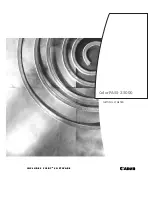
(Revised 2010-11-15)
page 12 of 30
Overview of Features
Compact Remote Access Solution
The 102RAS includes one integrated V.92/56K modem, housed in a compact, industrial chassis which
provides V.92/56K download speeds and 48K upload speeds when connecting with V.92 servers. Dial-in
users can achieve V.34/33.6K connections. Unit ships with 35mm DIN rail connector suitable for mounting
the unit on 35mm DIN rail in industrial environment.
Secure Remote Access
The 102RAS has a built-in security database for user name and password authentication for all remote users.
It also has a built-in RADIUS client for authentication to a RADIUS server.
Callback Security
The 102RAS provides password protection with callback security, and helps reduce long distance charges,
for remote offices and users requiring access to the central site LAN. The 102RAS server supports three
security options. The “fixed” callback option stores a password and the remote user’s phone number. Once
the remote site enters their password, the 102RAS calls back using the number stored in its database. The
“variable” option lets the user enter a fixed password and a variable call back number each time they call.
The “pass through” option is used to provide the security of password protection, while bypassing the call
back process.
Configuration and Management
The 102RAS web interface provides for easy set-up and configuration. In addition, it provides the ability to
view the current line status as well as a history of past activity.
Note: N-Tron does not provide technical support for the below Shared Modem Usage using Third
Party software (N-Tron does not provide any software for this use).
Shared Dial-Out Convenience
The 102RAS can also provide dial-out support for PC users on IP. This means system administrators no
longer have to dedicate a modem for LAN users who need to access information services. When used in
Modem Sharing mode, computers with network access to the 102RAS can use Telnet on port 7000 and get
direct access to the modem in the 102RAS. More commonly a com port redirector can be installed on the
workstation(s). A redirector adds a virtual communication port to Windows and uses Telnet to map
(redirect) the com port to the modem. Communication programs using this virtual com port will have its
data redirected to and from the modem within the 102RAS, eliminating the need for each workstation to
have its own modem and phone line. Only one com port (telnet session) can be open at a time.













































